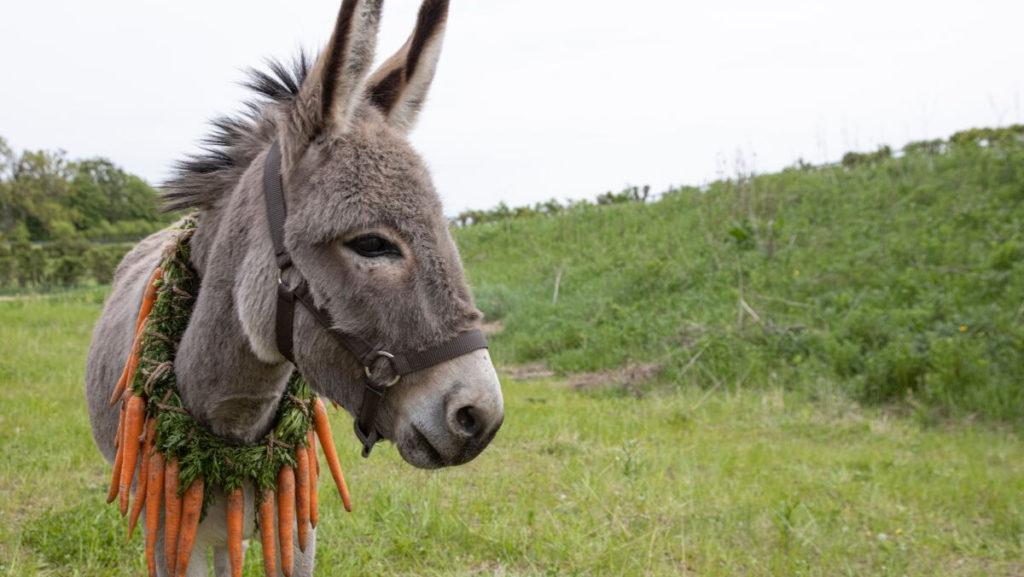Despite the development of a vast canon since the creation of motion pictures, not many live-action fiction films tell stories through the eyes of an animal. It can be hard for audiences to connect with a story in which the main character does not speak or use facial expressions to show emotion or communicate at all, even more when what dialogue is present in the film is in Polish and Italian, but this year’s Polish Academy Award selection truly breaks the mold. “EO” is one of the most haunting and beautiful films in recent memory.
The story of “EO” is an eclectic one. The film follows a donkey, the title character Eo, who is taken from his life as a circus performer and away from his owner, Kasandra (Sandra Drzymalska). Eo travels across Europe and meets a collection of unique personalities and characters, some good to Eo, some not as much. The film largely works as an anthology, depicting the stories of many different people along Eo’s path, but there is a high level of focus on the between moments, like the times in which Eo is walking along the countryside or when he’s stowed away on a truck.
Co-writer and director Jerzy Skolimowski expertly uses seemingly discreet scenes and stops on Eo’s journey as building blocks to set up a truly impactful story upon reflection. Skolimowski’s fierce command of the ever-shifting mood between the anthological moments that Eo sees on his journey is an impressive feat, especially when crafting it through the eyes of an animal. Between the final shot and the credits, Skolimowski asks the audience to reflect on the treatment of animals, both within the film and in real life, questioning if these beings receive the respect and care that they need to thrive. The violence against animals within the film becomes the basis for Skolimowski’s call to action in the end, a call to protect the wildlife that has been harmed so deeply by human industry and carelessness.
Skolimowski and his co-writer Ewa Piaskowska do not seem to be attempting to create one narrative throughline with this story, with the exception of Eo’s presence in the scene. Abstract in much of its form, Skolimowski, alongside cinematographer Michal Dymek, are able to immerse audiences in Eo’s world with the camera, despite only using a few POV shots. The film utilizes many different insert shots, throughout the transitional scenes to give audiences a clue into all of the vast textures and points of view that enrich the audience’s understanding of this brave new world Eo is facing.
The other formal elements of the film are also ones to note. The editing is precise and offers a simple rhythm that allows audiences to quickly fall into the contemplative cadence of the film. Each “episode” throughout offers a similar structure that becomes almost expected by the end. And the score by Pawel Mykietyn is an incredible piece of composition even on its own, with many of the tracks deserving multiple listens. Mykietyn strikes an impressive balance between the discordant feeling of the film and the innate beauty in the image, and the melodies of the film will stick with audiences beyond the end of the film.
Although this film is certainly not for everyone, it is imbued with empathy, passion and care for the natural world. It is a film worth watching for its formal elements alone, but the true balance that Skolimowski strikes between melancholy and hope and conveying it to the audience through a lead that cannot speak is the most impressive feat about this film.




















